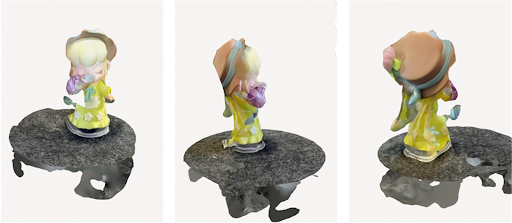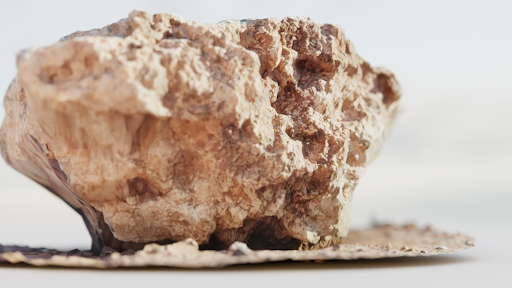3D printing has come a long way since its creation, with applications that span across industry and purpose. Whether you’re a tabletop enthusiast, mechanical engineer, or an aspiring hobbyist, 3D printing can truly bring digital ideas into the real world.
Now, with the rapid growth of 3D scanning, many enthusiasts are taking the initiative of scanning real objects and transforming them into ideal blueprints for 3D printing. For this, most users use photogrammetry, a powerful technique that analyzes feature points – which are unique identifiers of an object – to generate detailed 3D depictions based on a set of pictures taken around the object. You can think of it as piecing a digital puzzle together using pieces found in each photo.

Photogrammetry is a tried-and-true method for accurate, digital 3D representations of real objects, and thus has quickly become the primary option for 3D scanning. However, every technology has its limitations.
The Limitations of Photogrammetry in 3D Scanning
Because photogrammetry analyzes feature points of an object to create point cloud representations, variation in surface texture is essential for its effectiveness. But what if you’re scanning something that is shiny or reflective, causing inconsistency in the object’s feature points due to varying lighting conditions? How can photogrammetry recognize these ever-shifting reflections from different perspectives?
The short answer is: it can’t. At least, not really. Objects with shiny or reflective surfaces – or that are made from transparent or translucent materials – are inherently impossible for photogrammetry to cleanly process, as their feature points do not stay uniform.

This creates a limitation to 3D scanning in general. At the end of the day, why should you use 3D scanning if many of the objects you’d like to scan and print are reflective or shiny? To address this issue, Shenzhen-based KIRI Innovations has developed a unique technology that works “smarter” than photogrammetry: Neural Surface Reconstruction.
KIRI Innovations’ NSR for Shiny or Reflective Surfaces
Neural Surface Reconstruction (NSR) is a technique that implements Neural Radiance Fields (NeRF). This method uses a neural network to analyze data and present a depiction of the object in 3D space. It essentially mimics the functional process of the human brain, analyzing data in similar ways to our eyes and brain.
KIRI Innovations’ cutting-edge NSR technology implements a neural network (also known as “multilayer perceptron”) to anticipate the appearance of an object from any viewpoint and direction based on the available set of overlapping photos.
While photogrammetry takes in photo sets to create 3D models, KIRI’s NSR approach uses video to ensure the maximum range of overlapping frames to better identify an object. As previously mentioned, this “smart” or “human-like” analysis of objects makes scanning items with shiny or reflective surfaces possible – and the reconstruction of the data into a surface mesh through its neural algorithm is surprisingly good!

To get a bit more technical, NSR technology employs a neural network to generate and refine a volumetric representation of a scene using a collection of source images. This differs from the photogrammetrical approach of transforming feature point identification into a point cloud representation system. That said, the generated volumetric representation through NSR scanning is sufficient to be processed and reconstructed into a 3D mesh. This niche technology provides a viable alternative to photogrammetry in 3D scanning, accounting for objects with fewer feature points – or that have shiny or reflective surfaces.
To learn more about these technical marvels, check out this video from KIRI Innovations’ Co-Founder and CEO, Jack Wang.
KIRI Engine for Photogrammetry and NSR 3D Scanning
This isn’t to say that photogrammetry is outdated; in fact, it remains the most accurate and efficient method for 3D scanning. KIRI Innovations’ flagship application, KIRI Engine, offers both photogrammetry and NSR solutions, alongside several other options of 3D scanning, providing its users with a range of methods to create 3D scans.

In addition to adding the new Featureless Object Mode (NSR) to its existing photogrammetry solutions, KIRI Engine has also introduced “Object Capture” mode in its latest update. This is an integration of Apple’s Object Capture API, and allows LiDAR-equipped iOS devices to perform 3D scans with local processing. This technology bypasses the uploading and downloading process of conventional 3D scanning approaches, allowing users to obtain accurate 3D scans at unprecedented speeds.

To learn more about Object Capture mode, check out this video that explains the intricacies of this technology.

As KIRI Innovations strives to create cost-friendly 3D scanning solutions, both photogrammetry and Object Capture modes are free to use! To test the variety of functionalities the KIRI Engine provides for yourself, use the following download links:
Download KIRI Engine on Android: https://play.google.com/store/apps/details?id=com.kiriengine.app
Download KIRI Engine on iOS: https://apps.apple.com/us/app/kiri-engine/id1577127142
Check out KIRI Engine on web browsers: https://www.kiriengine.app/web-version/
